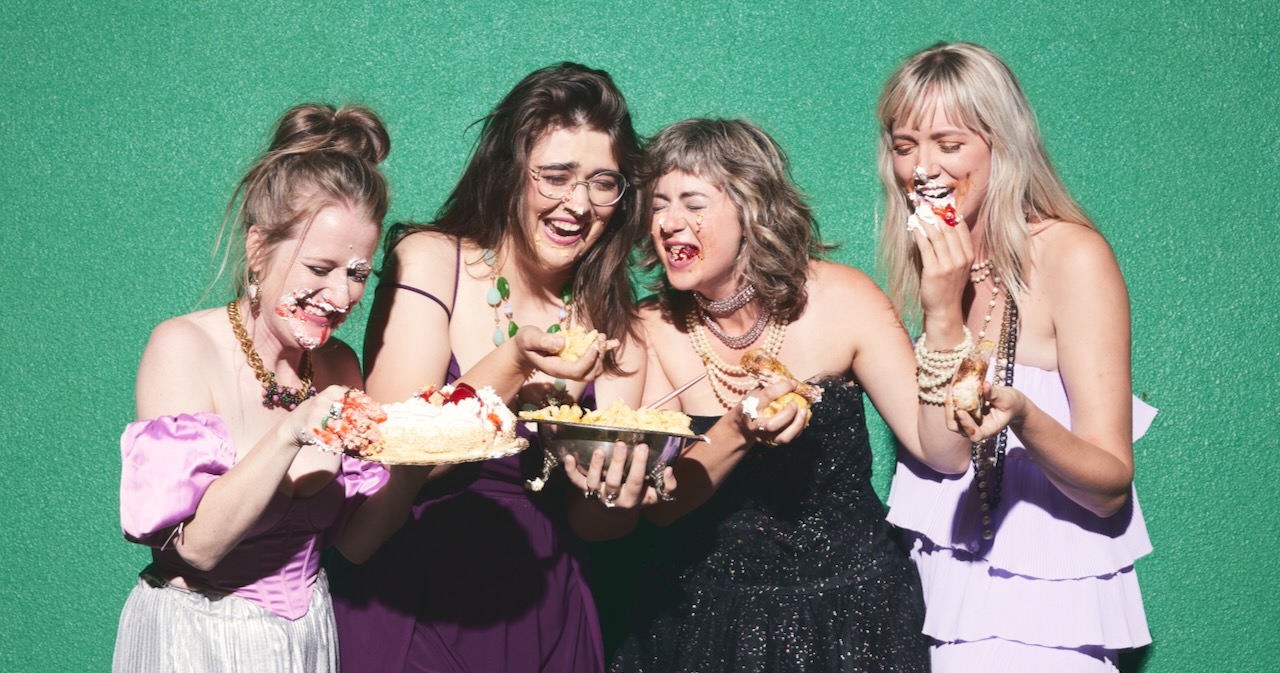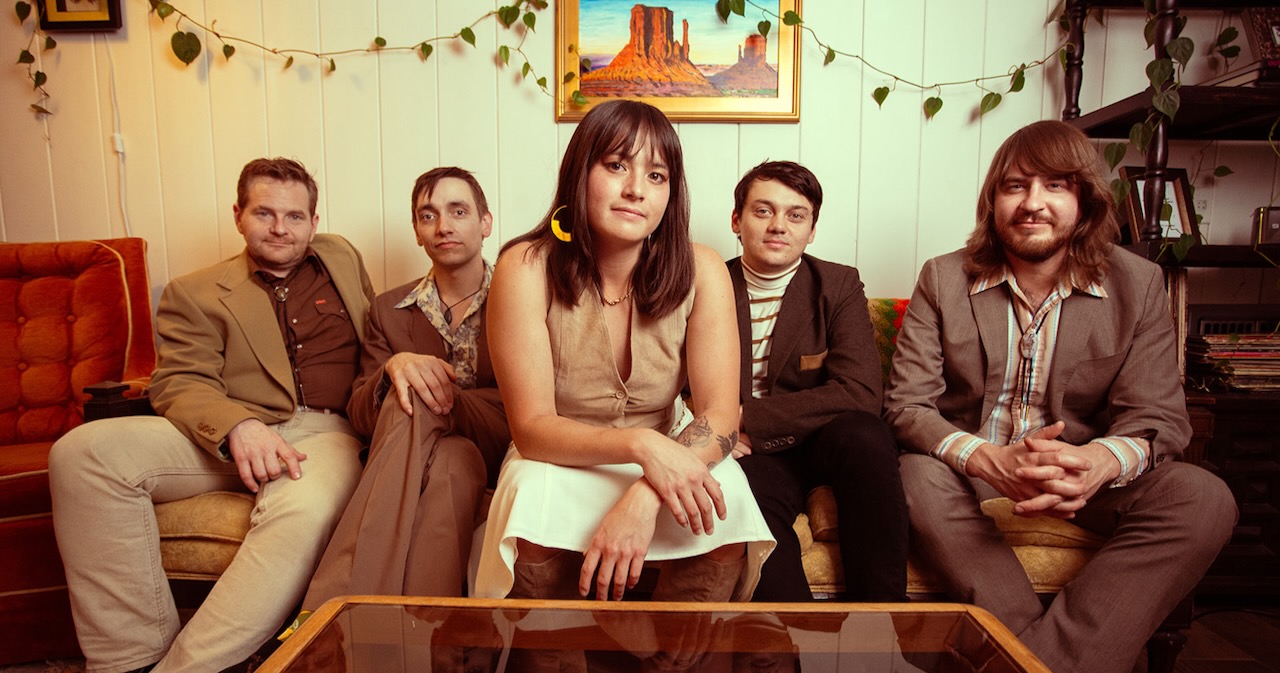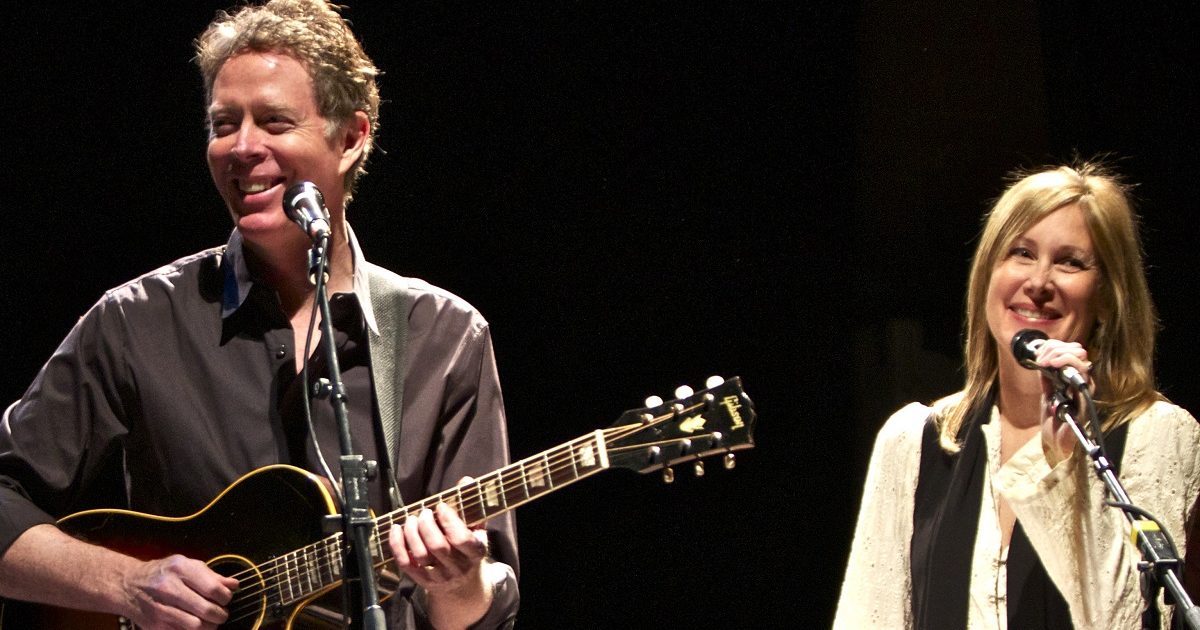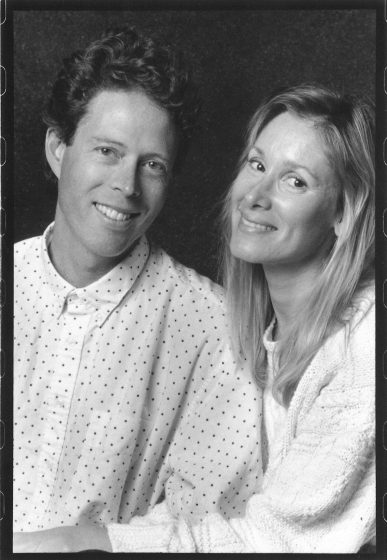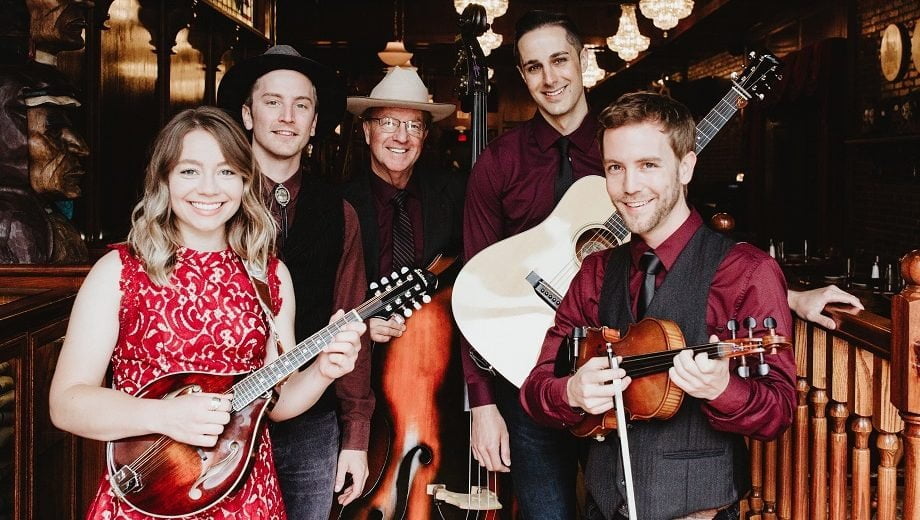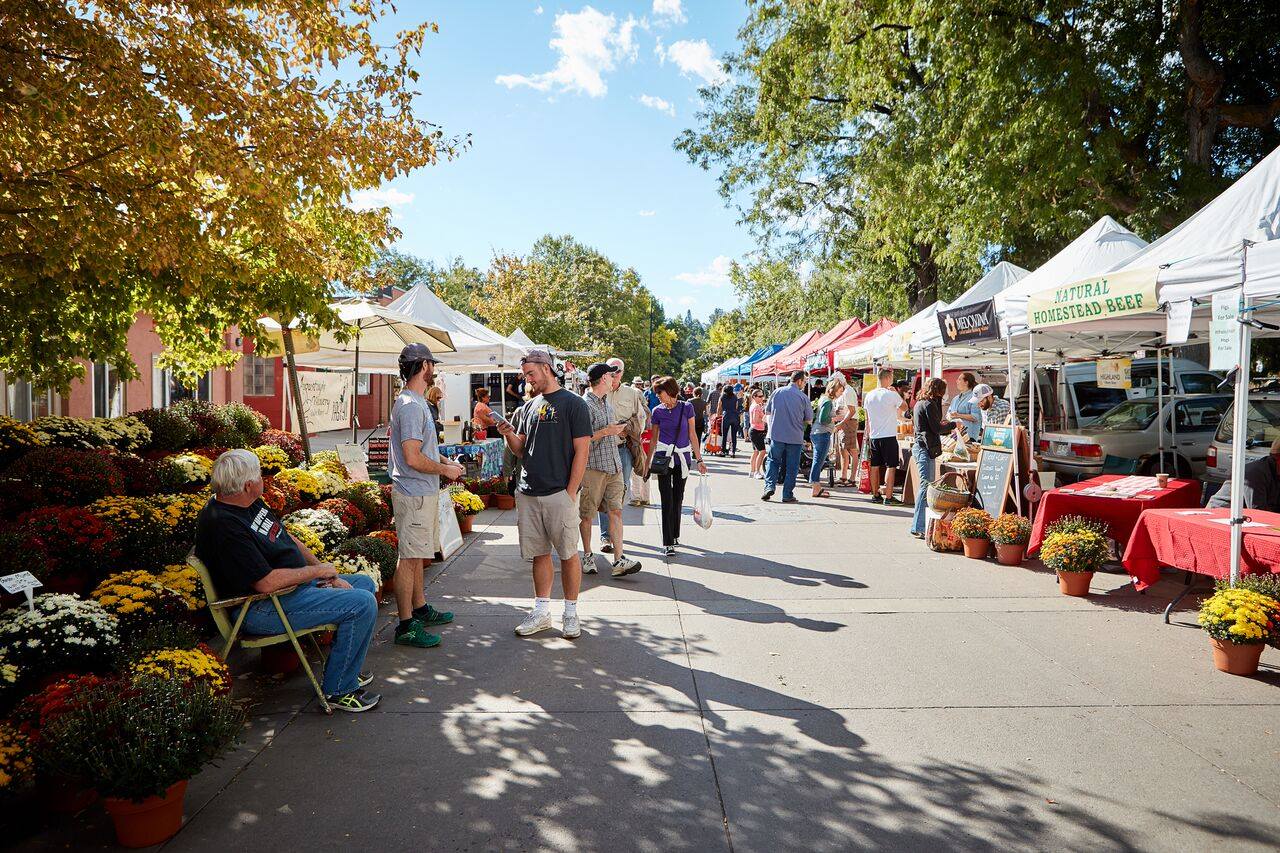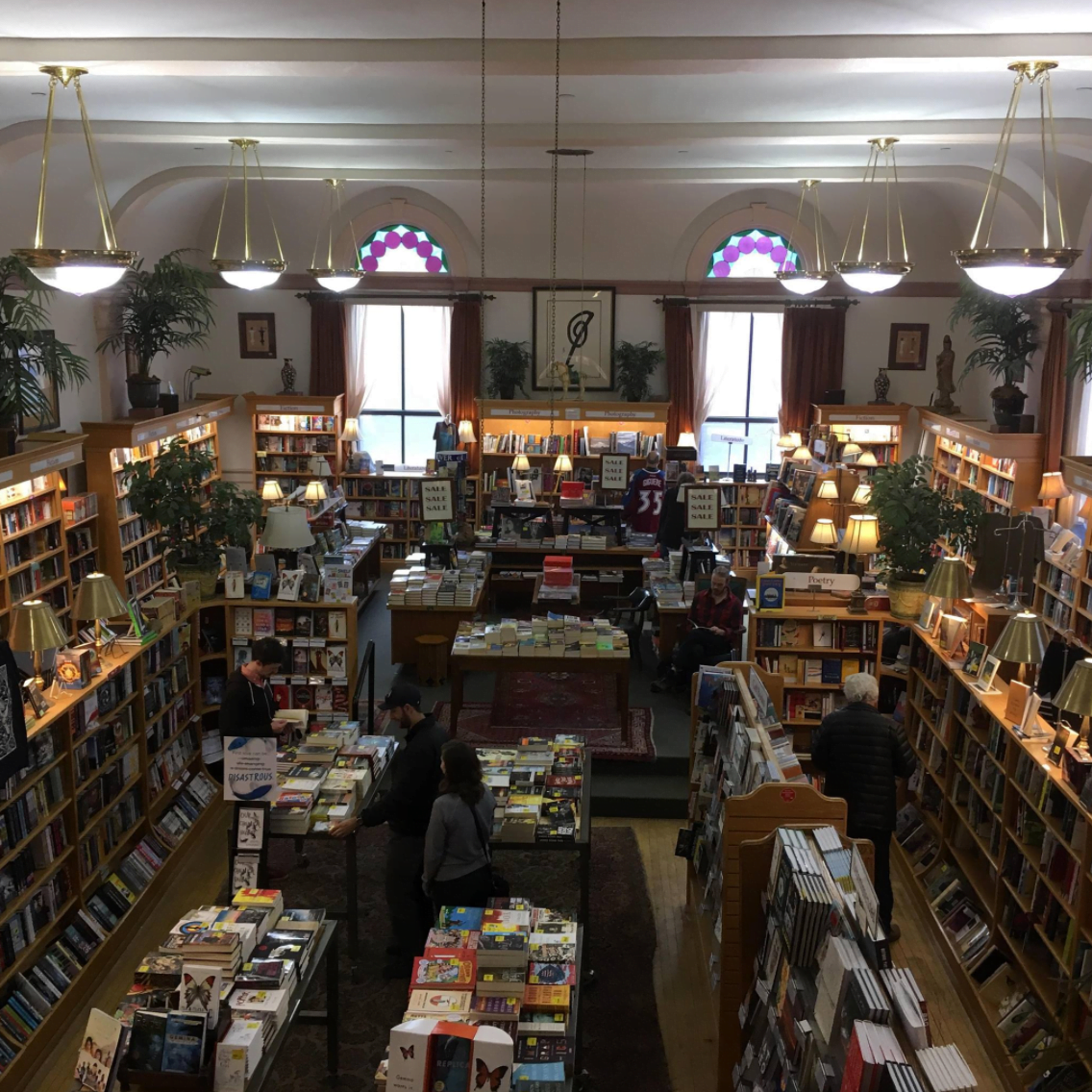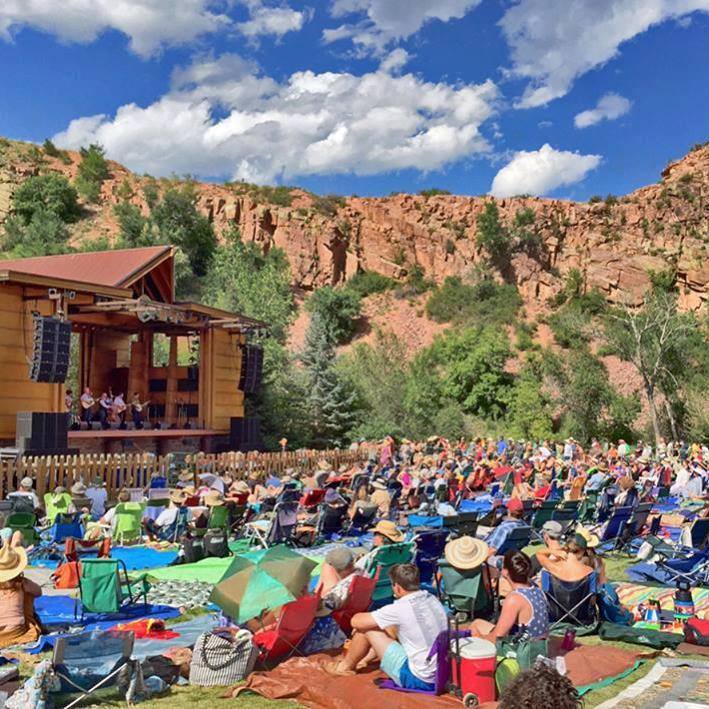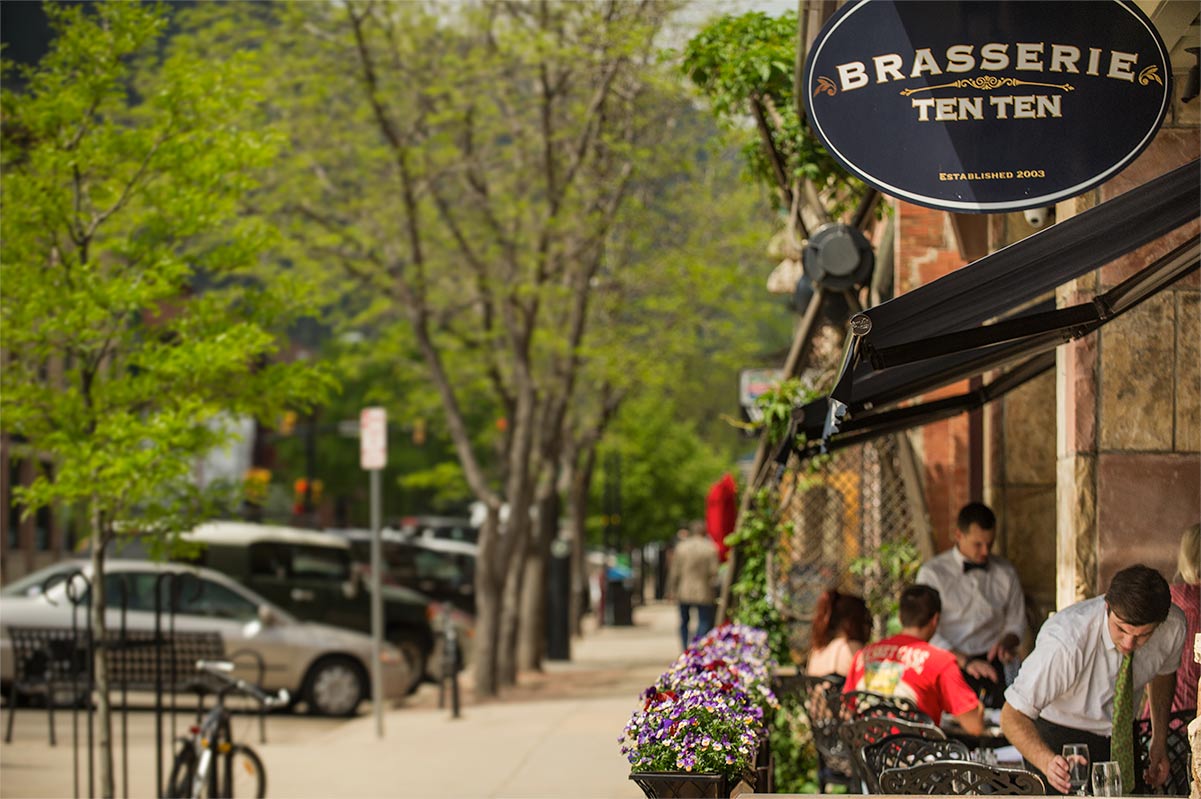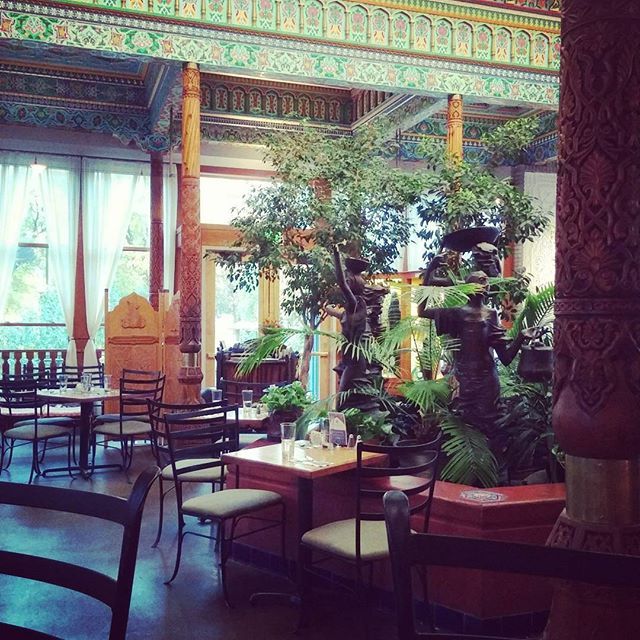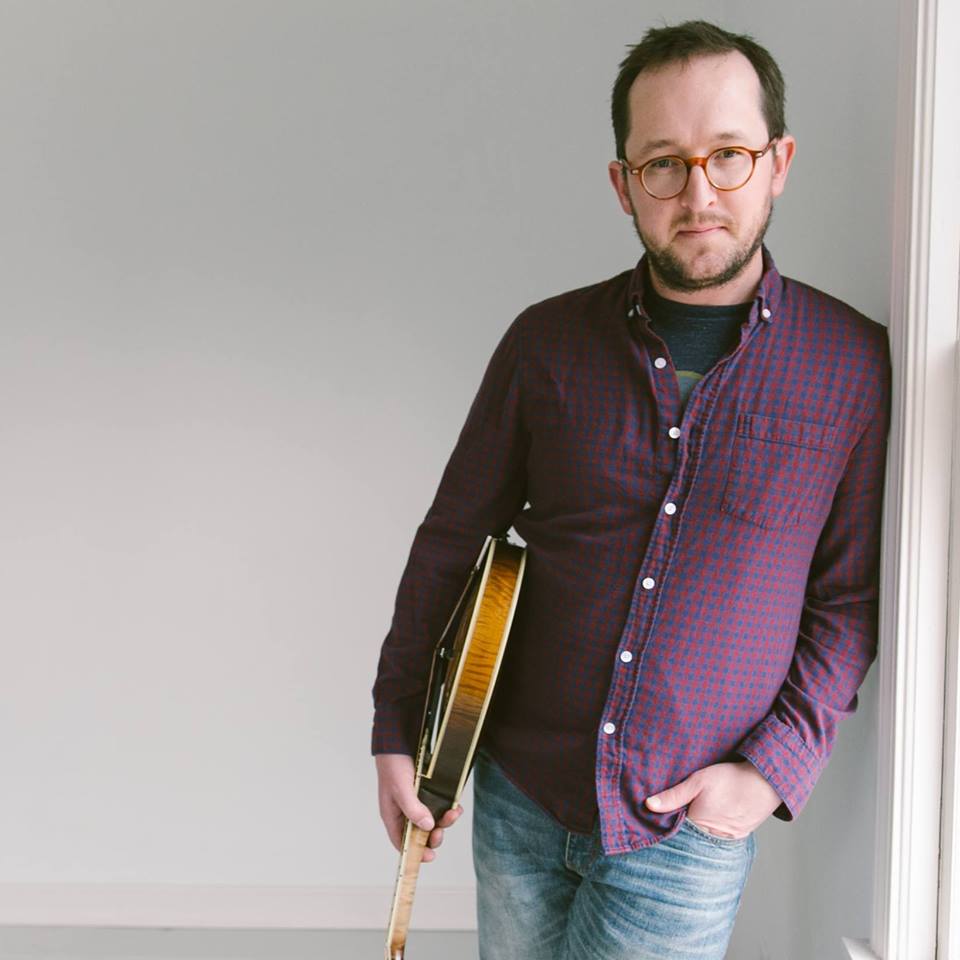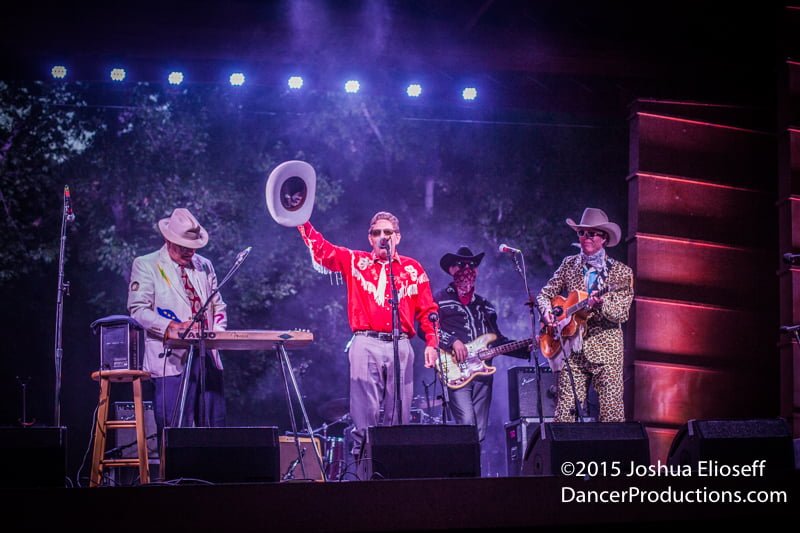The members of Big Richard – Joy Adams (vocals, cello, banjo, octave mandolin), Eve Panning (vocals, fiddle), Hazel Royer (vocals, bass, guitar), and Bonnie Sims (vocals, mandolin, guitar) – were seasoned studio and gigging musicians when they met for their first rehearsal. Familiar with one another from Colorado’s thriving music scene, their initial gathering was the result of an offer to assemble a band and perform at McAwesome Festival 2021 in Castle Rock.
Musical and personal chemistry, apparent during practice, was also a given onstage, solidly reinforced by an outpouring of support from fans. There was also a flip side – backlash to the band’s suggestive name and often-bawdy stage banter. This, it turns out, created even more incentive to continue. Big Richard was officially a band.
Their wealth of experience across musical genres – bluegrass, country, jazz, classical, rock, and beyond – opened the door for writing, recording, and performing music that pushes beyond parameters while remaining firmly planted in tradition. It shows on their new album, Girl Dinner (released January 24), produced by the band and recorded with Colorado musician and friend Eric Wiggs at his Vermillion Road Studio.
Technically their second release, following 2022’s Live from Telluride, Girl Dinner represents several firsts for the band: their first studio release, first recording of all-original material, and first with Royer, who joined the ensemble a year ago. According to the musicians, Girl Dinner demonstrates the many sides of Big Richard, everything from stripped-down, quiet instrumentation and harmonies to the blazing solos that define their performances.
When was it obvious that Big Richard would be more than a one-festival project?
Joy Adams: It wasn’t really in the first rehearsal. It was in the reception to the show that we played. Obviously, bluegrass is a jam-based genre; it’s common to sit down with your friends and play tunes. But we felt a crazy chemistry in the way we sang and played together that was apparent from the very first song we played at Bonnie’s house. When we played McAwesome Fest, for starters, our set got rained out, so we didn’t get to play the whole set. We were upset about that. We were looking for another gig just so we could get to the other songs. And we also had a bad reaction to us, too. There were people who were very upset about our name and how crass we were onstage and we got some initial hate mail after that first show. That was the moment – in my head, anyway – where we were like, “Oh, we have something here. If we can ruffle some feathers with this band, we’ve got to do this. This is an important thing.”
When and how did you build the band?
Bonnie Sims: We played that first gig in May 2021, our second gig in September 2021, and we hit the ground running in the beginning of 2022. We booked [Colorado festivals] RockyGrass and WinterWonderGrass right out of the gate, and that gave us a lot of fuel in our tank to want to invest in the creative side, start writing together, start rehearsing more, and really invest in the music, because we had these exciting opportunities to be a part of. Not long after we booked those things ourselves, we signed with Crossover Touring. Our buddy Chandler Holt has been our booking agent from the beginning and has been a huge part of helping us get to lots of festivals and play fun rooms.
Eve Panning: That first year or so was an unexpected influx of gigs. We did a ton of touring and I feel like we were kind of playing catch-up. It’s been really fun in this last year. We’ve all settled into the band a little bit more, and it’s been fun to hear the songs that everybody’s bringing and spend a lot of time working on those. You can hear that in the new album. Live From Telluride had some originals, but we were doing a lot of covers because we were so new as a band. This new album is all originals, and it’s been fun to explore that side of things as well.
How have the sound and dynamic changed since Hazel joined you?
JA: The band has changed so much. Hazel is wonderful. Her attitude is fantastic. She’s an incredible musician who has brought the level of the band up a lot. The arrangements have gotten better, the groove is tighter, and the overall balance of band vibes is wonderful. It’s everything all of us could ever have dreamed of, and I blame Hazel for that entirely. She’s such a lovely person to be around, she writes incredible songs that are deep and moving and exciting, and we’re so lucky to have her in the band. She really saved us.
BS: I agree. Hazel brings such a strong singing voice. It’s really fun to lean into the power she brings vocally, intertwine with that power, and lose ourselves in it. And her original songs are incredible. It’s a natural elevation of maturing as a group and playing together. This is year three going on to year four for the band. It’s a lot different. The pace has been incredible as far as how much time we’re spending making music together. It’s very much like a pressure cooker. It has an effect on the music itself, so the sound has evolved immensely and continues to evolve in an exciting way.
Hazel Royer: Thank you, everybody. That’s so nice. When I joined the band, everyone was, “We want to work. We want to try new things and learn new songs.” We spent two months rehearsing before we played our first gig with me on bass. We looked at the music and we became a band before playing the shows. There was an emphasis on learning new material, and there was a really good excuse to do that because there was a new member and no gigs for a couple months, so we had the space to learn new things. I’m really grateful that I got to be a part of that.
EP: When you only have four people onstage and it’s all acoustic instruments, when 25 percent of the band changes, that’s really significant. That means the sound is definitely going to change. But, like everyone said, Hazel has such a powerful voice, she’s such an accomplished musician, so it’s felt great. It’s felt like a wonderful step up.
HR: I was super-lucky because everyone in this band wanted me to exist as myself. That was the primary thing: “We want you to sing. We want you to write your own songs and bring them to the band.” That’s rare for a new person – joining a band and being like, “We want what you do as embedded immediately.” Additionally, we have a lot of crossover, musically, that we all can draw from. I grew up playing bluegrass and old-time music, and these guys are steeped in that. I also like pop music, and everybody likes that, and I had classical studies, and there’s two people who are very accomplished classical musicians, so there was a lot of crossover that made the integration of myself into the band easier than it could have been.
Let’s talk about the album – the songwriting process, song selection, your goals going into the studio.
BS: Our goal was to present something different than what we presented on our live album, which, like Eve said, was mostly covers. We recorded Live From Telluride after being a band for right at the one-year mark. It was very much the first generation of material. This is our debut studio album, but it’s our sophomore offering as far as the material, in my opinion, because it’s the second stage of the band’s development as far as it’s all original. There’s introspective and thoughtful moments within the songwriting. We have those at shows, but they’re always intermixed with high-energy, raging things where you can hop around and have a really intense, energetic experience. The album, I feel, offers up the soft side of Big Richard, in a way. We have this saying, “Big Richard, big feelings,” and the album is representative of that side of the band, which is, again, usually balanced with this different vibe live. So we took that out and just are doing the original stuff on the record, which is exciting.
Did you write deliberately to explore that softer side, or did the direction become obvious as you were writing?
JA: We didn’t intentionally write a soft album, and I hesitate to call it a soft album, because there are some burning fiddle tunes that Eve wrote and there’s a couple of aggressive songs, mostly coming out of Bonnie’s pen. The album is all over the map. The more lyrical songs were collected over the course of a year playing together. We love these songs so much and they got such a good reception at all of our shows. We did play them out pretty thoroughly before we recorded them, so it was a matter of collecting our favorite songs that we felt hit the emotional depths of “Big Richard, big feelings.” We were really proud of these songs.
HR: To go off of what Joy said, they’re our favorites. We picked them because we all were very passionate and love those songs. There are some soft songs on the album, but there’s a wide variety of things going on there. It is different than our live show by a significant margin. The album, in my view, is a piece of something that’s made out of love. We love this music and we created these arrangements together.
Once the songs were selected, what was the sequencing process?
EP: We had an initial sequence, and then we were limited by how many songs we could put on each side of the vinyl, so we had to take our original idea and rework it. The album starts and ends with songs about saying goodbye, and that hits; that feels like a powerful moment.
HR: We looked at this group of songs as a set list. We wanted to create a listening experience similar to something we would provide at a show, like, how do these songs flow into each other? Are there seamless transitions that we’re able to utilize? That’s how we looked at sequencing the album. And also separating saying goodbye a million times. At the top and the end of the album was important.
BS: Vinyl presents an opportunity for sequencing to have more of a presence again. With digital consumption, people just click what they want and add it to their own playlist. No shade; do your thing with your playlist, but with vinyl you’re going to probably sit and listen to it in the order that we put it in, because that’s the style of listening for a record. So it’s nice to have that opportunity with vinyl.
Tell us about the recording process.
JA: We recorded this album in May 2024, and we had the last master submitted in September or October. Vinyl production takes a little while, so we got the vinyl back in December, which was really exciting. Mixing and mastering is a crazy process that takes so long. That’s the part I’m very obsessed with. I was, unfortunately, the squeaky wheel the whole time, being like, “The bass needs to be half a dB [decibel] higher in this song, in this one section, but not all the other sections.” That was all me. I love the process of recording. We’re not a band that plays a song a hundred times – thank heavens for that. We tend to get things within five takes. Some solos got replayed or re-recorded, little things that got added, studio magic. I’m very proud that this album required basically no tuning and really simple edits.
EP: We also did a lot of tracks without a click. We didn’t go into the studio with a plan as far as which ones we were going to record to a click and which ones we were going to just play. But I think it keeps a lot of life in those songs as well, playing them like we do with a little bit of breadth to them.
HR: This might go without saying, but we tracked the whole thing together. We made basic tracks and there was some soloing, editing, but that was it. Just iso booths, but all four of us live.
The album was self-produced. What does the word “producer” mean to you? Did you experiment much or make changes to the songs while recording them?
JA: Production for this kind of band, to me, means deciding how we were going to record it, which is a very big discussion: are you all in the same room together, are you recording separate, are you recording to a click track, etc. And then, of course, trying to democratically decide what take has the most musical power, because you’re going to sacrifice a little perfection somewhere for the sake of something that’s riveting. That’s always the case. And then making decisions about mixing and mastering. In some ways it would have been nice to have had an external source of nature in the room, like another producer to help us make those decisions, but it was incredibly empowering to make them ourselves, because we have dragged these songs through both the mud and the sky on the touring road.
We had really figured out and dialed in the arrangements in front of thousands of people. We knew exactly what we wanted out of these songs, and so it was liberating to be able to put those down in our way and not have to fight a producer on some decisions. As far as things changing in the studio, not a whole lot changed. We were all playing the instruments that we do. Sometimes Hazel plays guitar or bass, and so we had the ability to have both bass and guitar on some of her tunes, which was really effective. That was one thing that was different than how we usually do it live.
HR: To go off what Joy said, I think the production, as far as the musical side of things goes, really did happen on the road and in rehearsals. We came into the studio knowing our songs, exactly how they go, what we want where, and what we’ve tried and tested a billion times, instead of coming up with arrangements in a studio environment.
The Colorado music scene has been very supportive. How great a part have those audiences played in taking the band to the next level?
BS: The audience has been instrumental in every step and every piece of our success. They are the success, because if they weren’t there, buying tickets and wanting to be at shows, we wouldn’t have a reason to be out touring. We’re grateful to everybody who comes to shows. When we come back to our Colorado hometown vibe, it really keeps us going. It keeps the light on for us, because those are the crowds that lift us up energetically and have been there from day one. Coming back to those audiences fills our tank in a real way.
Find more Big Richard here.
Photo Credit: Jason Innes
